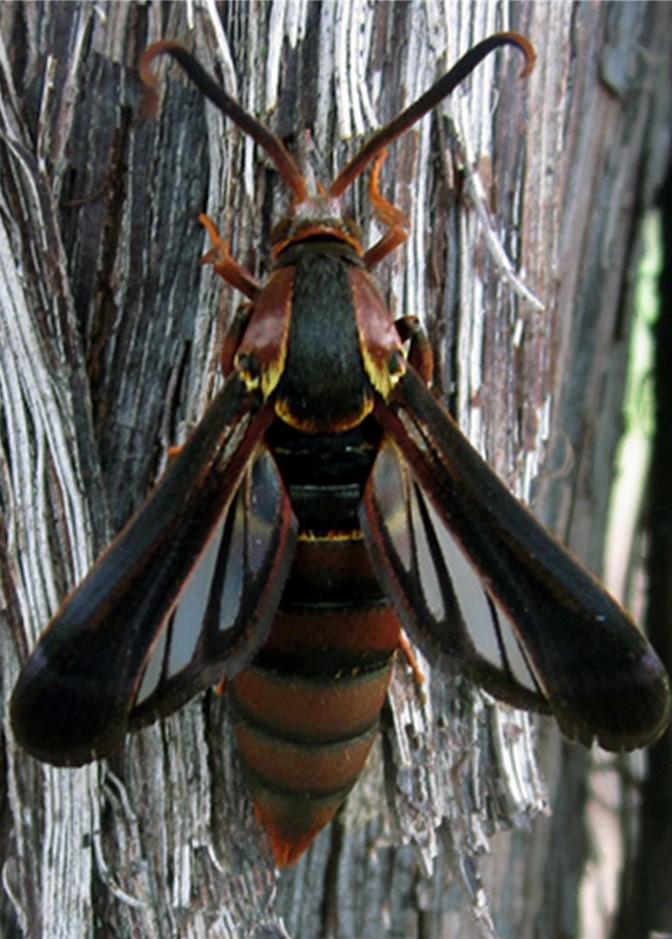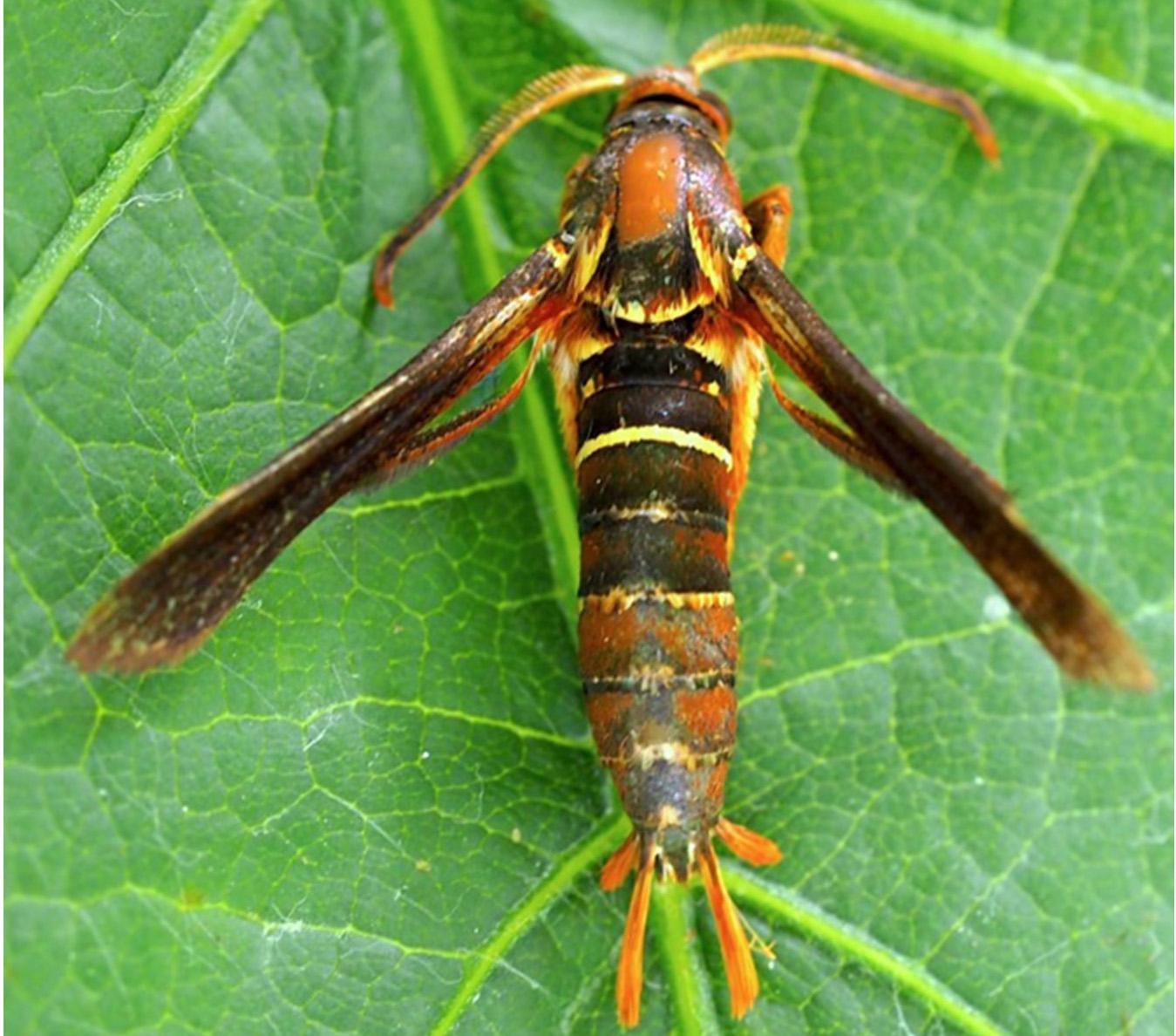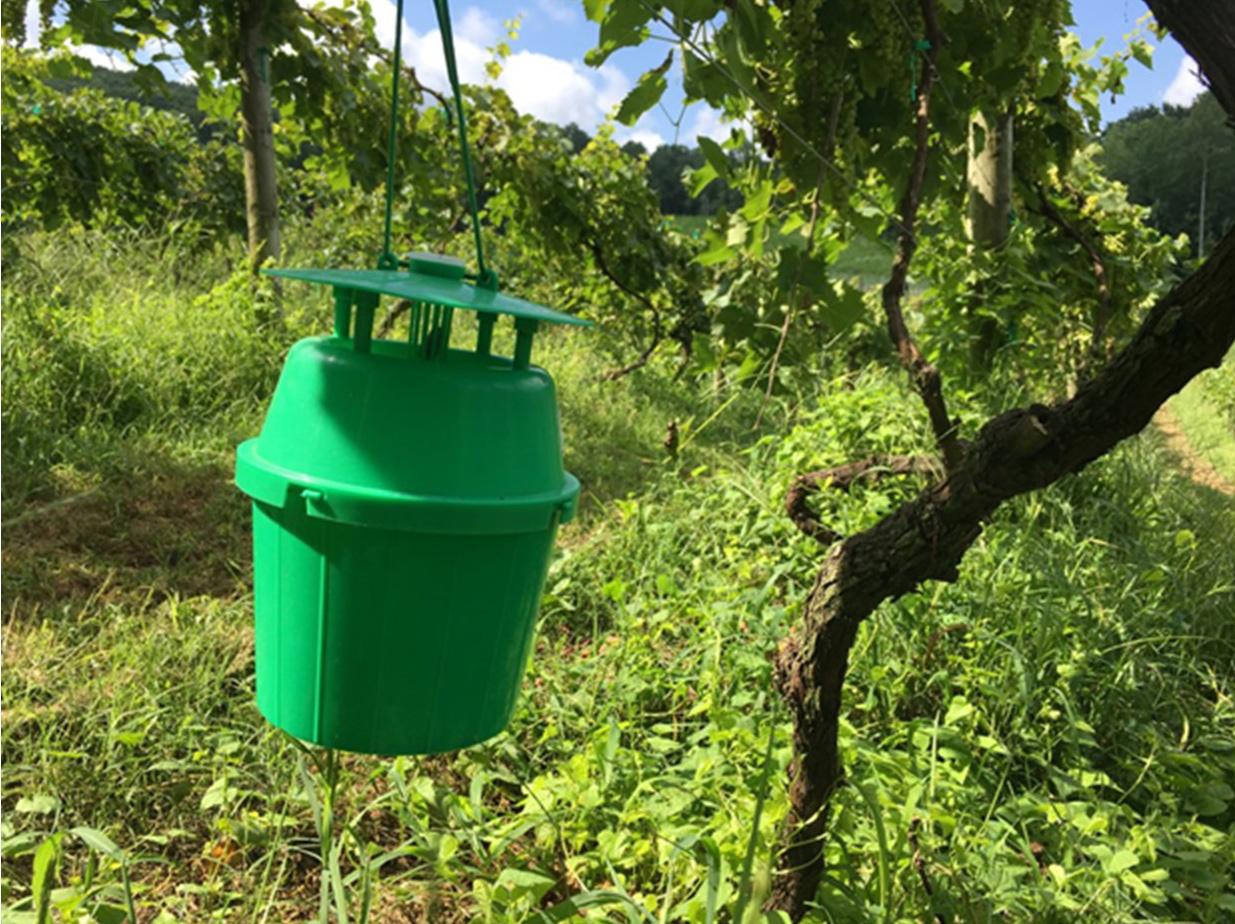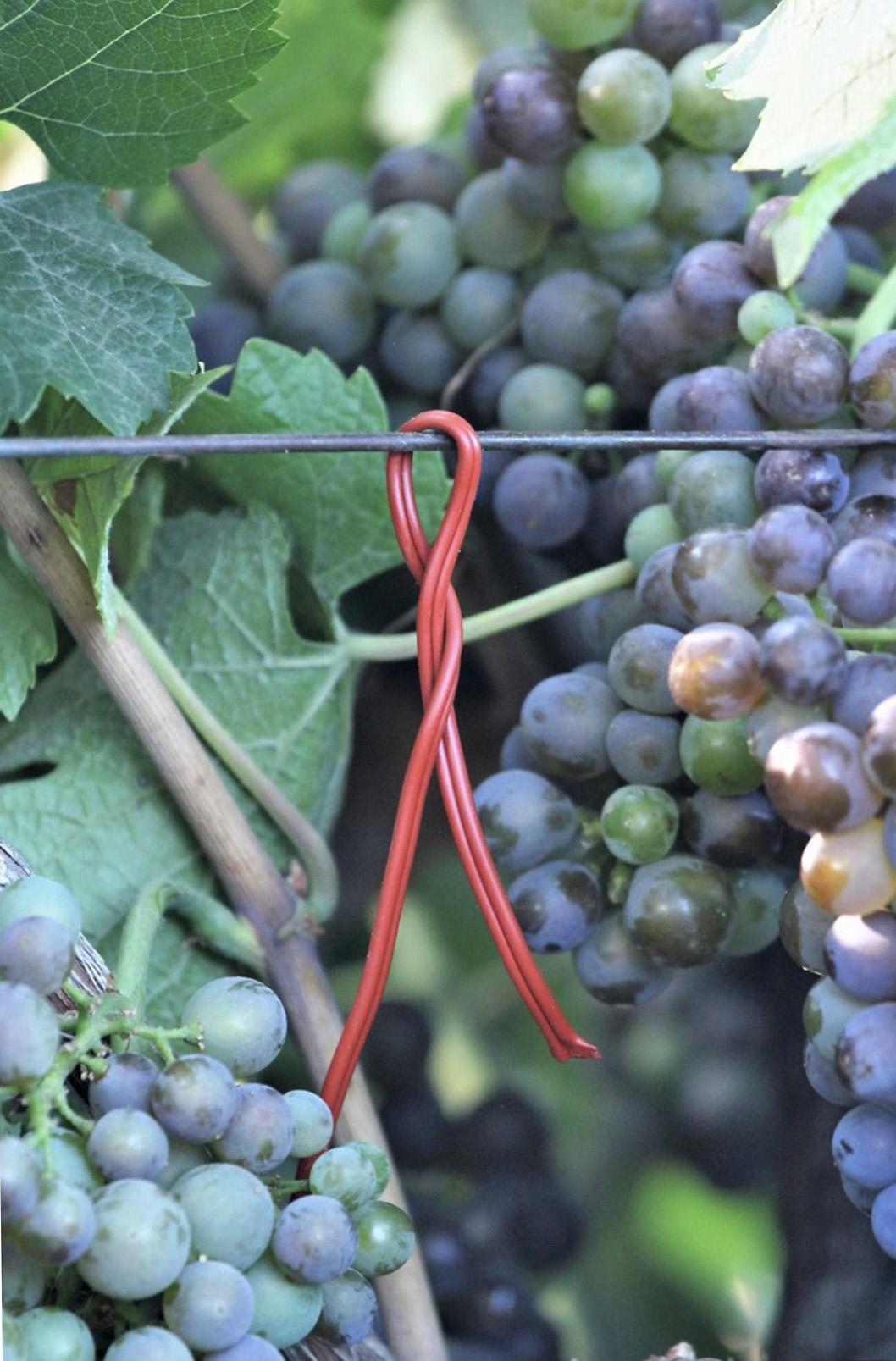Grape Root Borer-Background, Scouting, and Management
The grape root borer (GRB), Vitacea polistiformis (Harris), is an insect pest native to the Eastern United States. Its range is from the central Midwest (west) to the Atlantic Ocean (east) and from Florida and Texas (south) to Vermont and Michigan (north). GRB is a pest of all commercial grape types and feeds on native Vitis. It has a long life cycle and takes many years for it to do significant damage to grapevines. However, once grape root borers are present in a vineyard, the unlimited susceptible food source can dramatically increase the infestation. The grape root borer effect may not be immediately apparent on the vines, but once the number of larvae reaches a sufficient level, damage can be significant. Because it is an ("invisible") root tunneling pest, many growers are unaware of the economic damage being caused by GRB.




